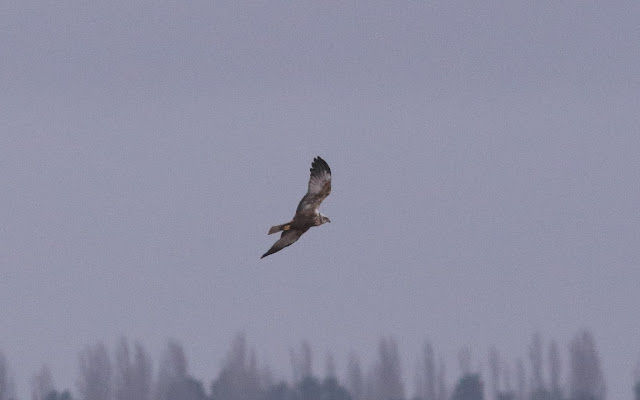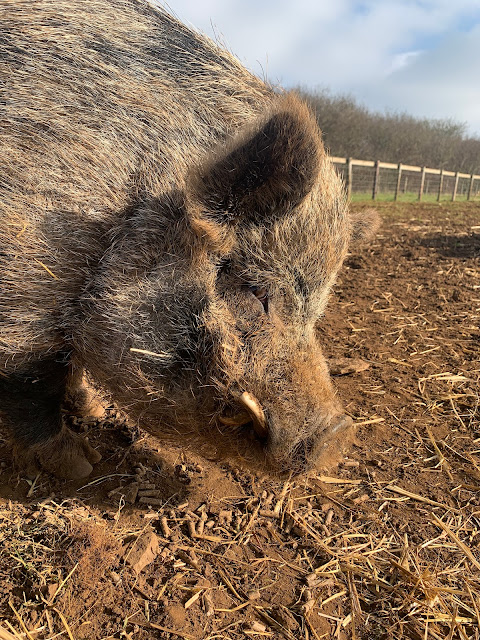Tuesday, 28 February 2023
Waiting for Omid
Monday, 27 February 2023
Azores Pelagic 2023
There are still a few spaces remaining on the Azores Pelagic 2023. More details HERE and previous trip reports and species logs HERE.
Main target is Monteiro's and Grant's Storm Petrels with a good chance of Swinhoe's Storm Petrel. Other local specialities likely to be encountered include Barolo's Shearwater, Bulwer's Petrel, Wilson's Storm Petrel, Great and Cory's Shearwaters and Sooty Tern.
Vagrant seabirds are also a target of this trip with South Polar Skua, Brown Booby, Zino's Petrel and Deserta's Petrels having been found on these trips and both Black-capped and Trindade Petrel have been recorded in the local area. Full species list HERE
In addition to the seabirds, twelve species of cetaceans have been recorded. Full species list HERE.
Furthermore an extension to this trip also targets the other Azores endemic species including the Azores Bullfinch and the recently split Azores Chaffinch plus other Azores endemic sub-species (potential future splits) including the distinctive Azores Gull. More details on local birds HERE .
To book a place please email me on littleoakgroup@btinternet.com or follow booking link and info HERE. Full cost of trip is £2170 pp (including the extension and international flights). Pelagic only (Terceira to Terceira) is £1488 pp.
Saturday, 25 February 2023
Otmoor
Friday, 24 February 2023
Sheppey
Had another day on Sheppey yesterday. I did Leysdown Country Park and adjacent fields and Capel Fleet. Highlights included the 10 Bewick's Swans again, White-fronted Geese, a few Red-throated Divers, a couple of Hen Harriers and a handful of Marsh Harriers. Also plenty of Med Gulls around and many getting towards summer plumage.
Wednesday, 22 February 2023
Lazlo
I've always agreed with the principle that if you eat meat you should be willing to raise and kill it yourself in order to stay connected to the process. I agree that there has been a great disconnection between animals and meat which has led to the industrialisation of the meat production process which has led to poor animal welfare and a spiritual disconnection from the food web.
Anyway so I have finally been in a position to raise, humanely kill and eat meat. However the process has been very enlightening and quite emotional. I actually got quite attached to Lazlo, he was almost a member of the family. It actually felt a bit like eating a family member. I actually miss him running around and calling in the morning (and all day and sometimes at night too). At the same time he tasted great and he started terrorising the kids and Jacob stopped going out in the garden because he was terrified of getting attacked. He started attacking everyone too including me so the health and safety and children wellbeing considerations helped in the decision making process.
So overall a very interesting experience and one I would recommend to any meat eater. It's important to be acutely aware of what it is be a carnivore (or predator) and to accept the emotional responsibility of that which in my experience is a tough conflict between emotion and reason.
Tuesday, 21 February 2023
Otmoor etc
Monday, 20 February 2023
Anti-environmentalism in Oxford this weekend
Interesting developments locally this weekend. A significantly large protest occurred in Oxford city against 15 minute neighbourhoods which are effectively behavioural change plans attempting to reduce car use and introduce more localism in the drive towards net zero.
The protests are part of a wider resistance to what can be perceived as a drive towards lower standards of living and reduced freedoms for citizens which includes initiatives such as reduced travelling abroad, eating less meat, paying higher energy bills and working and living in smaller spaces (low carbon birding is the intrusion of that agenda into the birding community). The resistance is fueled further by being enforced by fines, social shaming (e..g anti-twitching trolling on twitter) and the lack of a democratic process involved- basically forced behavioural change being imposed by a group of Elites from above using authoritarian tactics.
It's pretty clear that whatever the motives of the Sustainability Idealists there have certainly been some communication complications in the whole thing. From the perspective of these protesters, sustainability is being portrayed (or rather perceived) as a negative thing, a threat to them and there lies the problem. A change in our collective lifestyle to one which is less addicted to mass consumption of manufactured goods and more about re-connecting with nature and each other is not a threat to us at all- it's quite the opposite. The threat to us is our collapsing capitalist society and somehow these Oxford elites have managed to make themselves part of that and have divided society even further, created more anxiety and polarised things even further.
Genuine Sustainability (which basically means to not die and keep going as both a collective species and individuals- I would also add not dying inside too which is the greatest threat to most of us - ending up enslaved and soul drained and too afraid to kill ourselves) does not divide people- it unites them- because if communicated properly, it is the only direction to personal success (and there are many paths that head in that direction) and that cannot be forced on people against their will, it has to be their choice and their own way. It should be a beacon of hope, not a threat.
A couple of videos below, one from the liberal capitalist BBC and another from Chinese-owned Tik-tok.
@mattlawsonphotography2.0 The power ser has always been within us. We just had to find our voice. Say no to 15 minute cities!!! #fyp #foryourpage #australia #oxford ♬ The Champion - Lux-Inspira
Saturday, 18 February 2023
Twists and turns
Thursday, 16 February 2023
On the road
Spent the last couple of days on the road, firstly in London for work and then a day on Sheppey today. Visited Beddington Farmlands yesterday evening and met up with Zach, highlight was a Little Owl in Beddington park.
Ebird lists from Sheppey today, Leysdown area here and Shellness and Swale NNR here. As always excellent birding in this area, today's top of the pops was a first-winter Caspian Gull (a personal Sheppey tick), 10 Bewick's Swans (five adults and five young), 86 Russian White-fronted Geese and quality winter scenes comprising thousands of waterbirds.
Tuesday, 14 February 2023
Acleris action
Had a couple of Acleris sp in the moth trap at the Old Vic which I've had a go at identifying using a book (! almost forgot what one was!) -The Common Micro-moths of Berkshire by Nick Asher (an outstanding piece of work). I'm not sure if my CMR team will have any of my putative identifications though and they will probably insist that these Acleris go for gen dent.
It's half term and we have discovered a fresh hell - Fairytale Farm, where we took the kids yesterday. It will never cease to amaze me the weird and wonderful captive biodiversity in these family attractions- this time a breed of pig, the Mangalista which is a wild boar hybrid. Also secretly learnt the meaning of some dinosaurs scientific names.
Had a quick meeting with Nature Metrics here this morning looking into getting some e-DNA kits to help identify some of the species on our project sites which basically will never get round to identifying by sight such as micro-diptera and coleoptera and other micro organisms. That will be interesting to give that a go. They have a turn around time of 8 weeks which sounds good and can help across our projects here, in the Azores and Bulgaria.
My only other experience with DNA testing (apart from kids!) was when we sent a sample of a presumed Amur Stonechat that I found at Medmerry in 2020 off to Martin Collinson . After many months of of waiting they said they couldn't extract any DNA and on twitter one of Martin's team said 'you get what you pay for'. I would have been happy to pay and wouldn't really expect not to in a lot of cases so not sure what the attitude was for. I don't actually agree with the assumption that anything free is poor quality either as there is a lot of outstanding quality work in natural history that people produce for free and open source too. Basically I think anything you are producing should be the best possible quality whether freely or commercially distributed (we produce both here and there are often very good reasons why something should be free, subsidised or commercial)- what's the point of doing anything if you are not going to do it properly. Anyway hopefully dealing with a commercial company will be a better experience and worth paying for. I recommended they get into charging birders for quick turn around DNA identifications and they said they will look into it- certainly a small niche there- I would happily have paid £150 or so to get an eight week response on that Stonechat. Also lastly on this tangent, when the 2020 BB rare bird report came out they even missed the Stonechat record out (Collinson and BB are same crowd of British birding traditional establishment). It wasn't even down as an Eastern Stonechat and when I chased up they said it was a mistake and they lost the record. Good job I don't find many rare birds in Britain because in my limited experience it's a shambles. Roll on commercial DNA birding results and the Ebird and Ebird validators takeover:-)






,%20June%202011.%20Rafael%20Armada.%20RA20110601_40591.jpg)













































